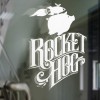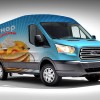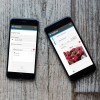
Make Your Sauna Business Sizzle with Local Ads That Work
Why local wins for sauna retailers
Local advertising for sauna businesses connects you with nearby customers who are eager to visit your showroom, inspect craftsmanship, and get installation questions answered. High-intent searches like “sauna store near me” or “infrared sauna showroom in my city” bring in buyers ready to decide, making your local presence a key driver of booked appointments. By focusing on your metro area, you build trust through proximity, reviews, and an inviting in-person experience, with creatives that feel personal and tracking that shows what’s working.
Quick advantages of local advertising:
- Attracts high-intent customers for faster booked appointments
- Reaches buyers within your showroom’s true radius
- Builds trust with local proximity, reviews, and a welcoming showroom
Build the foundation before you buy clicks
Great ads can’t rescue a weak destination. Create a dedicated landing page for each metro you serve and treat it like a concierge. The page should introduce your key product lines, show installation basics in plain language, and feature a handful of focused FAQs that anticipate objections. A map embedded with hours and directions makes the “come see it” step frictionless, while recent reviews and photos build trust faster than any tagline.
Close with two clear next steps—Book a Showroom Visit and Get a Quote—so visitors don’t have to guess how to move forward. Tracking is not a nice-to-have; it is the engine of your optimization loop. Set up Google Analytics 4 with events for form submissions, phone calls of meaningful duration, and booked appointments. Connect Google Ads and Meta so each platform can learn from conversions and you can report on source-to-sale with confidence. Finally, check page speed on mobile. If your page drags on a basic 4G connection, you’re paying to lose impatient buyers.
Foundation checklist to sanity-check:
- One metro-specific landing page with reviews, FAQs, and an embedded map
- Two primary CTAs (Book Visit, Get a Quote) are visible on mobile and desktop
- GA4 events for forms, calls (≥30s), and appointment bookings
Capture “ready now” demand with Google
When someone nearby types “sauna store” into Google, you want to be the answer. Start by targeting a sensible radius around your location and add high-intent keywords that reflect how real buyers search in your area. Blend exact and phrase matches to control relevance without choking volume. Your ad copy should read like signage for a great local shop: models in stock, installation available, financing ready, and a short, concrete invitation to visit or book. Location and call extensions turn the ad into a mini-profile that reassures people you’re truly local.
Protect your brand terms as well. Those clicks are inexpensive, and competitors love to bid on your name once your visibility improves. If budget allows, a modest Performance Max configuration aimed at local outcomes can add incremental reach across Maps, YouTube, and Display. It won’t replace Search, but it can help you show up where prospects browse.
Create demand and stay top-of-mind with Facebook and Instagram
Meta’s strength is simple: it puts compelling visuals in front of qualified neighbors who didn’t know they were in the market yet. Drop a pin on your showroom, begin with a reasonable radius, and keep the targeting human. Homeowners over thirty who care about wellness and home improvement will recognize themselves in the right creative.
Short vertical videos of your showroom, quick cuts of infrared versus traditional heat, and brief first-person testimonials work especially well because they answer the question every scroller has: “What would this look and feel like in my home?”
Retargeting audiences bring back the people who almost took action. A seven-day segment reminds hot prospects about installation and financing, while thirty- and ninety-day segments catch slower deciders who need a gentle nudge. Keep the copy friendly and local—invite them to “test-drive the heat” on a Saturday or to book a twenty-minute consult that answers electrical and sizing questions. When your ads sound like an invitation from a neighbor and not a national brand, response rates climb.
Creative concepts that reliably stop the scroll:
- 15–30s showroom walk-through with captions and a clear “Visit this week” invite
- Before/after corner-to-sauna carousel that helps buyers visualize space
- Quick “benefit snackables” (sleep, recovery, stress relief)—one benefit per frame
Create offers that move people from curiosity to commitment
Discounts aren’t your only lever. Framing the next step as an experience often works better for a considered purchase. For example:
- A “Try the Heat” showroom session with a quick wellness consult turns an errand into an event.
- White-glove installation within a defined radius removes a practical barrier.
- Bundles that include a backrest and lighting kit increase perceived value without eroding margin.
- Clear financing language—anchored to a realistic monthly number with approved credit—helps buyers picture ownership now instead of “someday.”
- The right offer is the bridge between interest and appointment, and it should be visible in your ads, landing page, and follow-up emails.
What a smart starter budget looks like
Every metro behaves a little differently, but a balanced plan for one location allocates most spend to high-intent Google Search, with modest support for brand protection, a measured Performance Max test, and a smaller portion to Meta for prospecting and retargeting.
The principle is simple: fund the channels that capture buyers who are already searching, then add storytelling and retargeting to grow overall demand. As data accumulates, shift spend toward the combinations of keyword themes, creatives, and zip codes that consistently produce booked appointments and showroom traffic.
Simple allocation model (example):
- 50–60%: High-intent Google Search
- 5–10%: Brand protection
- 15–25%: Performance Max (local signals + product feed)
- 15–25%: Meta (prospecting + retargeting)
Measure what matters, not what flatters
Click-through rate and low cost-per-click can be comforting, but they don’t pay the bills. You need to track the right metrics. Examples of what you should be tracking include:
- Cost per lead and cost per booked appointment weekly.
- Listen to a sample of recorded calls to confirm the leads are qualified and to catch patterns in questions that your landing page could answer better.
- Compare close rates by source; if Meta generates cheaper leads but Google closes twice as often, it may deserve more budget or more patient follow-up.
- Search term reports should be reviewed regularly to add negatives that protect your budget from irrelevant queries.
The goal is a tight, repeatable loop: learn quickly, adjust cleanly, and keep the tests small enough that losing ones don’t sting.
Your short weekly scorecard:
- CPL and cost per booked appointment
- % of calls that are true consults
- Close rate by source and by zip
- New negatives added + creatives refreshed
Putting it all together
Local success comes from a system: fast, trustworthy landing pages with clear offers, tightly geofenced Google campaigns to capture intent, and Facebook/Instagram ads to drive demand and re-engage visitors. Track cost per appointment and close rate by source, then optimize budget for results. Rocket Hog delivers high-converting landing pages, precise Google and social media campaigns, and revenue-focused analytics to grow your sauna business. Start streamlining your strategy and focusing on sales. Contact us today!
FAQs
Why should I focus on local advertising for my sauna business?
Local advertising targets high-intent buyers near your showroom who are ready to visit, see your products, and ask installation questions. It shortens the sales cycle, reduces ad waste from clicks outside your buying radius, and builds trust through proximity and reviews.
What should my sauna landing page include to convert local visitors?
Your landing page should act like a concierge, featuring metro-specific details, key product lines, simple installation info, focused FAQs, recent reviews, and an embedded map with hours and directions. Include two clear calls-to-action: “Book a Showroom Visit” and “Get a Quote.”
How do I set up tracking to measure my ad performance?
Use Google Analytics 4 to track form submissions, phone calls (≥30 seconds), and booked appointments. Connect Google Ads and Meta to optimize for conversions. Regularly review search term reports to add negative keywords and ensure your budget targets relevant queries.
What types of Google Ads work best for sauna businesses?
Focus on high-intent keywords like “sauna store near me” or “infrared sauna [city]” with exact and phrase match types. Use ad copy that highlights in-stock models, installation, financing, and a clear invitation to visit. Add location and call extensions for a local feel, and protect your brand terms from competitors.
What metrics should I track to evaluate my ads?
Focus on cost per lead (CPL), cost per booked appointment, and close rate by source. Check the percentage of calls that are true consults and review search term reports to refine targeting. Refresh creatives regularly to avoid performance drops.







